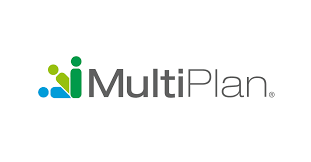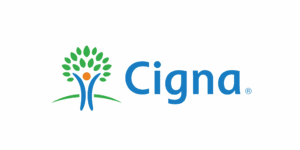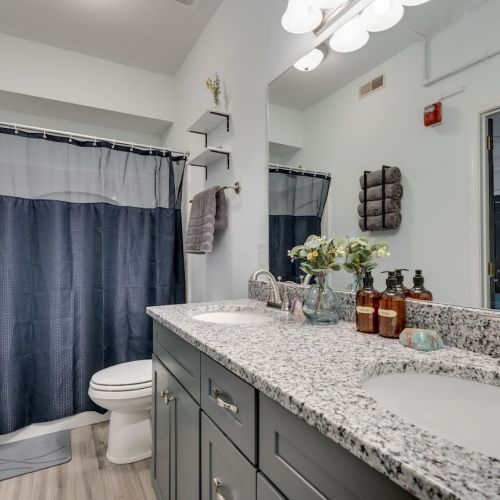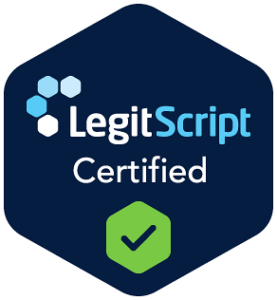Polysubstance use means relying on more than one drug or alcohol at the same time or in close sequence. It can look like alcohol with benzodiazepines, opioids with stimulants, or a rotating mix of prescriptions and street drugs. This page explains how the Tennessee Detox Center helps you stabilize safely and transition into a comprehensive plan that addresses both substances and the underlying reasons behind your use.
When more than one substance is involved, medical care is not optional. Interactions can mask symptoms, speed up withdrawal from one drug while slowing another, and raise the risk of seizures, respiratory depression, or heart strain. A clinical team that understands these patterns can keep you safe and make the first days more manageable.
If you’re searching for a polysubstance abuse treatment center in Tennessee, you’re in the right place. Our program combines careful medical oversight with practical polysubstance treatment that fits real life. You will know who is on your team, what to expect each day, and how each step leads to the next level of care.
The goal is a steady handoff from detox to rehab and into relapse prevention and aftercare, with privacy, clear communication, and family support when you want them involved. No guesswork. Just a clear path forward.
What Is Polysubstance Detox?
Polysubstance detox is a medically supervised process that helps your body clear more than one substance while keeping you safe and as comfortable as possible. It begins with a thorough assessment of what you have been using, including the frequency, duration, and most recent use.
Providers check vital signs, review medications, run laboratory tests when necessary, and screen for potential issues such as seizure risk, dehydration, or heart problems. From there, the team creates a plan tailored to your mix of substances and your health history.
Supervised polysubstance detox lowers risk because withdrawal does not unfold on a single timeline. Alcohol and benzodiazepines can cause dangerous drops in blood pressure or seizures, opioids bring intense aches and GI distress, and stimulants can trigger crash symptoms, agitation, or low mood.
When these overlap, symptoms can spike or hide each other. Through continuous observation, scheduled checks, and medication protocols, the team can respond promptly to your body’s needs.
This is polysubstance withdrawal management in practice: measured monitoring, targeted comfort medications when clinically appropriate, hydration and nutrition support, sleep stabilization, and adjustments as symptoms change.
Medical detox for multiple substances is not the finish line. It is the first, crucial chapter in a larger treatment pathway. Once you’re medically stable, you step into the next level of care that fits your needs, such as inpatient rehab, partial hospitalization, or intensive outpatient.
Therapy begins to address triggers, habits, trauma, pain, and sleep, while relapse prevention planning gives you daily tools for the first ninety days. Done well, polysubstance detox hands you a calmer body, a clearer mind, and a written plan for what happens next.
Signs You May Need Polysubstance Detox
Stabilizing the body is harder when more than one drug is involved because withdrawals don’t start and stop together. Each substance has its own clock. Alcohol and benzodiazepines can produce dangerous symptoms within hours, opioids typically peak later, and stimulant crashes can stretch mood and sleep problems for days.
When these timelines overlap, symptoms can stack, compete, or hide one another. A person may look calm because a sedative is still in the system while a stimulant crash is beginning, or appear agitated from stimulant rebound when the real danger is an approaching alcohol withdrawal seizure.
Opposing drug classes create special complications. Sedatives slow breathing and heart rate, while stimulants push them higher. Using them together can mask distress until the sedative fades, at which point the stimulant effects dominate and vital signs surge. The reverse can also happen.
An opioid can blunt the discomfort of alcohol withdrawal for a short time, then wear off and reveal a sudden escalation of tremor, blood pressure changes, or confusion. These masking effects lead to rebound symptoms that seem to appear out of nowhere. A night that begins with anxiety relief can end with severe agitation, chest discomfort, or a seizure risk that was not obvious earlier.
This is why continuous monitoring and staged protocols matter. Frequent vital checks catch shifts in blood pressure, pulse, temperature, and oxygen saturation before they become emergencies. Structured observation windows allow clinicians to see the true pattern once one substance clears and another becomes dominant.
Medication plans are adjusted in real-time, ensuring adequate dosing for safety without oversedation. Hydration, electrolytes, and nutrition are closely monitored because imbalances can worsen withdrawal and slow recovery.
Clear escalation rules guide when to add medications, increase observation, or involve higher acuity care. With this level of attention, the team can distinguish between overlapping syndromes, prioritize the highest risks first, and progress step by step toward a stable baseline that is safe for the next phase of treatment.
Medication Assisted Treatment for Polysubstance Rehab
Withdrawal window: Alcohol symptoms often begin within 6 to 12 hours after last use, peak at 24 to 72 hours, and may linger for several days. Benzodiazepine withdrawal can start later, last longer, and occasionally unfold over weeks.
Notable risks: Seizures, delirium tremens, unstable blood pressure and heart rate, oversedation, and breathing suppression if recent use was heavy.
Monitoring priorities include frequent vital signs, CIWA-Ar scoring for alcohol, careful calculations of benzodiazepine equivalency, fall and seizure precautions, and oxygen monitoring.
Comfort strategies: Long-acting benzodiazepine protocols for alcohol withdrawal with cautious dosing due to cross-tolerance, thiamine and electrolyte replacement, fluids, sleep support, and quiet rooms. If a benzodiazepine taper is indicated, it is paced and reviewed daily.
Withdrawal window: Short-acting opioids typically produce symptoms 8 to 24 hours after last use, with intensity peaking around 48 to 72 hours; long-acting opioids start later. Benzodiazepine withdrawal can emerge more slowly and last longer.
Notable risks: Respiratory depression early on if both are present, agitation as opioids clear, and delayed anxiety or seizure risk as benzodiazepines fade.
Monitoring priorities: Continuous pulse oximetry when recent use is suspected, sedation checks, COWS scoring for opioid withdrawal, and a structured benzodiazepine plan if dependence is present.
Comfort strategies: Buprenorphine induction or other opioid withdrawal care when appropriate, anti-nausea and anti-diarrheal support, fluids, temperature regulation, and a gradual benzodiazepine taper that avoids oversedation.
Withdrawal window: A stimulant “crash” can occur within hours to one to two days, with symptoms including fatigue, low mood, and sleep disruption lasting several days. Alcohol withdrawal may begin while stimulant effects are fading.
Notable risks: Masking of alcohol withdrawal by residual stimulation, blood pressure and heart rate swings, chest discomfort, anxiety, and mood volatility. With cocaine plus alcohol, cocaethylene formation increases cardiac strain.
Monitoring priorities: Vital signs with attention to blood pressure and pulse, cardiac symptoms, hydration status, temperature, and serial assessments for emerging alcohol withdrawal symptoms.
Comfort strategies: Quiet, low-stimulus environment, sleep and nutrition support, hydration, targeted medications for anxiety and blood pressure when indicated, and close observation for late-appearing alcohol symptoms.
Withdrawal window: Stimulant crash usually arrives first, followed by opioid withdrawal that peaks later. This produces a sequence of exhaustion and low mood followed by body aches, GI upset, and restlessness.
Notable risks: Dehydration, electrolyte imbalance, cardiac strain, and rapid mood shifts that raise relapse risk.
Monitoring priorities: Vitals, COWS for opioid symptoms, nutrition and fluid intake, mental status and suicidality checks during the crash phase, and rhythm or chest pain evaluation if indicated.
Comfort strategies: Buprenorphine or other opioid protocols when appropriate, anti-nausea and anti-diarrheal care, non-sedating sleep strategies, gentle movement, and structured day plans to reduce rebound use during the crash.
Withdrawal window: Alcohol drives the main withdrawal timeline. Overuse of sedating antihistamines or non-benzodiazepine sleep aids can add rebound insomnia and anxiety as they clear.
Notable risks: Additive sedation and impaired airway reflexes early, followed by a sharper rebound in agitation or insomnia as the sedative effect wears off.
Monitoring priorities include: Conducting Airway and oxygen checks early, administering CIWA-Ar for alcohol, tracking sleep and agitation overnight, and implementing fall precautions.
Comfort strategies: Standard alcohol withdrawal care with careful sleep support that avoids oversedation, scheduled hydration and nutrition, and light-exposure hygiene to reset sleep.
Withdrawal window: Cannabis withdrawal is typically milder and may include irritability, sleep problems, and appetite changes over several days. When paired with alcohol, watch for alcohol’s earlier and more dangerous window. With stimulants, expect a longer stretch of sleep and mood disruption.
Notable risks: Nausea and appetite swings that worsen dehydration, anxiety that blurs recognition of alcohol or stimulant symptoms, and sleep disruption that fuels cravings.
Monitoring priorities: Hydration, nutrition, sleep quality, mood and anxiety levels, and screening for alcohol or stimulant-related complications.
Comfort strategies Include Anti-Nausea support, simple nutrition plans, sleep hygiene routines, brief mindfulness or breathing exercises, and gradual activity to reduce crash-related fatigue. If alcohol is part of the picture, standard seizure and vital sign precautions apply.
Across all combinations, success comes from matching care to the most urgent risk first, then pacing comfort medications and sleep support while fluids, electrolytes, and nutrition are restored.
Frequent checks allow the team to see when one substance’s effects fade and another’s withdrawal emerges, which is why supervised polysubstance detox with structured observation is the safest route into stabilization and the next phase of treatment.
Clinical Assessment and Triage on Day One
Your first day focuses on understanding your health picture and keeping you safe. A clinician sits with you to review medical history, current prescriptions, allergies, and any past experiences with withdrawal or treatment.
You will walk through a simple timeline of substances used, including the typical amount, how they are taken, and the most recent use. We ask about sleep, pain, mood, and any symptoms that worry you. This conversation lays the foundation for a plan tailored to your body and goals.
Basic testing helps confirm what your body can process. A toxicology screen can be used to identify the presence of various substances. Nurses check vital signs at regular intervals and perform brief assessments that help us track symptoms over time.
For alcohol, we use the Clinical Institute Withdrawal Assessment for Alcohol, revised. For opioids, we use the Clinical Opiate Withdrawal Scale. Short checklists help us follow stimulant effects and sedative effects without guesswork. None of these tools replaces listening to you; they simply make changes easier to see and respond to.
Safety screening is part of every first day. We review suicide risk in a respectful, private way and create a simple plan for support if needed. We assess fall risk, seizure risk, and heart-related risk so the team knows when to implement closer observation or extra precautions.
If pain, head injury, or sleep problems are part of the picture, we note them early so they are addressed alongside withdrawal care.
All of these findings come together in a customized detox plan. The team sets the monitoring frequency, chooses comfort strategies, and outlines support for hydration, nutrition, and sleep.
Medication decisions, when appropriate, are paced and reviewed so you feel steady rather than sedated. You will know who is on your team, how often they will check in with you, and what the next twenty-four hours will look like.
As symptoms change, the plan adjusts accordingly, keeping you safe while preparing you for the next level of treatment.
Inpatient vs Outpatient Polysubstance Abuse in Tennessee
Medical Detox for Multiple Substances
The priority is safety. Tennessee Detox Center offers twenty-four-hour nursing and medical oversight, allowing changes to be noticed early and addressed promptly. A calm, predictable environment helps lower stress, while the clinical team tracks symptoms and explains each step before it occurs. This level of attention is essential for medical detox for multiple substances, where timelines and risks can overlap.
Medication strategies are individualized and paced to match your mix of substances and your health history. For alcohol, the team uses structured protocols to reduce seizure risk and ease tremor, anxiety, and sleep disruption while avoiding oversedation.
For benzodiazepine dependence, clinicians consider a gradual and closely monitored approach that respects your prior dose and duration, with frequent check-ins to keep you steady.
For opioids, providers evaluate the right time to begin withdrawal support and use comfort medications to reduce nausea, cramping, and restlessness, with careful attention to blood pressure, oxygen levels, and overall comfort.
For stimulants, care focuses on managing the crash period, mood swings, agitation, and disrupted sleep in a way that promotes stability rather than sedation. When profiles are mixed, the plan staggers interventions so that the highest-risk issues are managed first. This is polysubstance withdrawal management in practice, where decisions are made step by step as your body clears each substance.
Hydration, electrolytes, and nutrition are part of the medical plan from the first hours. Fluids are scheduled, and light foods are offered in small, frequent portions, with electrolytes replaced as needed. Sleep support is simple and non-habit forming wherever possible, paired with quiet rooms and low light to help your nervous system settle.
Pain management strikes a balance between relief and recovery goals. The team employs approaches that do not undermine sobriety and checks in frequently to determine what is working.
Observation is frequent and respectful. Vital signs are taken on a schedule that matches your risk level, allowing you to track trends in blood pressure, heart rate, temperature, and oxygen saturation.
Nurses document symptoms at set intervals and encourage you to speak up if something feels off. Escalation thresholds are clearly defined. If a measurement crosses a certain line or symptoms intensify, the team increases observation, adds medication support, or brings a provider to the bedside.
Transfer criteria are also clear. If a higher level of medical care is indicated, arrangements are made quickly and with your consent, and the handoff includes a concise summary so you do not have to repeat your history.
Medical providers round every day. During these visits, you will review the last 24 hours, discuss what helped, and adjust the care plan accordingly. If sleep has been difficult, the team may change the evening routine or the timing of comfort medications.
If anxiety has spiked at certain hours, the schedule can shift to add check-ins or grounding practices before those windows. These small adjustments add up to a steadier experience and reduce the likelihood of surprise symptoms.
Communication is clear and steady. You will know who is on your team, how to reach them, and when to expect the next check-in. If family updates are helpful, they will only occur with your written permission and will follow the boundaries you set.
Your questions are welcome at any time. The aim is to make supervised polysubstance detox feel organized and predictable, even when your body is working through complicated changes.
From day one, a written next step map is started. As the medical team focuses on stabilization, a case manager prepares the plan that follows detox. That plan may include inpatient rehabilitation for structured and intensive therapy, partial hospitalization for full daytime treatment with evenings at home or approved housing, or intensive outpatient treatment for several sessions each week while you return to work or school.
The map lists therapy cadence, peer support options, and the first appointments after discharge. It also includes a short list of early warning signs and who to contact if stress rises.
By combining round-the-clock oversight, thoughtful medication strategies, restorative basics such as fluids and sleep, and a clear plan for what comes next, Tennessee Detox Center makes medical detoxification for multiple substances safer and more manageable. This approach to polysubstance withdrawal management gives you a calmer body, a clearer mind, and a confident handoff into the next level of care.
Inpatient Polysubstance Rehab After Stabilization
Once withdrawal has been safely managed, many clients benefit from a period of inpatient rehab to consolidate gains and prevent early setbacks. Detoxification calms the body, but patterns, triggers, and stress responses still require focused attention.
Inpatient care provides a quiet setting, a predictable schedule, and round-the-clock support, enabling you to develop skills before returning to a busy life. This structured time lowers relapse risk, enables medications to be fine-tuned, and creates space for family to learn how to support your progress.
Days follow a steady flow. Mornings begin with a brief check-in, goal setting, and a review of medication, as needed. You meet one-on-one with a primary therapist to work on triggers, thinking patterns, sleep routines, and plans for high-risk times of day.
Skills groups focus on craving management, emotion regulation, communication, and problem-solving under pressure. Process groups foster peer accountability and encourage honest conversations about victories and setbacks. With consent, family sessions teach boundary setting, calm communication, and a simple plan for evenings and weekends.
Early trauma work is introduced when clinically appropriate and only after you have grounding skills in place. Education about the nervous system comes first, along with short practices that settle hyperarousal.
When you are ready, trauma processing moves at a pace you set, with frequent check-ins and clear session boundaries. Pain and sleep are addressed alongside therapy, so progress does not depend on white knuckling your way through symptoms.
Step-down readiness is measured, not guessed. Milestones include steady participation, improved sleep, reduced symptom intensity, consistent skill use, and a clear safety plan. The team meets regularly to review progress and adjust the plan. Discharge planning begins early to ensure a smooth transition.
You will leave with a written schedule that includes therapy cadence, peer support, medication follow-ups, and a first ninety-day plan. If sober living will help, placements are coordinated in advance. The goal is to carry momentum from inpatient care into the next level with confidence and clarity.
Partial Hospitalization for Polysubstance Needs
Partial hospitalization is the bridge between full structure and growing independence. You attend a full daytime clinical schedule and return to approved housing or home in the evening.
The format keeps clinical support close while you begin testing skills in the real world. Mornings include check-ins, setting goals, and practicing skills. You meet individually with a therapist and attend groups that reinforce coping, communication, and relapse prevention.
Consent-based family sessions remain available to support the evolution of home routines during treatment.
Real-life practice is built into the week. You plan short exposures such as errands, a family conversation, or a workplace meeting, then debrief with a clinician to track what worked and what needs a tweak.
Safety checks anchor the day. You will map high-risk windows, set a script for invitations to use, and build a plan for evenings and weekends when structure is lighter. Craving management, sleep routines, and pain strategies are rehearsed until they feel natural.
Medical providers review medications as independence increases. Timing and doses are adjusted to support focus during the day and rest at night, with careful consideration of potential side effects.
Vitals and symptom trends are monitored to catch changes early. Case managers reduce friction by aligning transportation, benefits, and follow-up appointments to ensure seamless care. By the end of the track, you will have a predictable week, stronger habits, and clearly scheduled next steps into intensive outpatient care.
Partial hospitalization gives you daily support while you practice carrying recovery through real days, a combination that makes the transition home safer and more sustainable.
Intensive Outpatient for Polysubstance Recovery
The Intensive Outpatient Program, often referred to as IOP, is where treatment meets everyday life. You attend several sessions each week that blend individual therapy, skills training, and peer accountability.
The cadence is steady enough to maintain momentum and flexible enough to accommodate work shifts, class schedules, and family responsibilities. Each week begins with a brief check-in and goal setting, followed by practical work on triggers, routines, and communication.
Groups are small and focused, so you can discuss cravings, stress, and progress openly without needing to elaborate.
Reintegration is deliberate. Therapists help you rebuild a work or school routine that supports recovery, rather than competing with it. You will practice sleep habits that stabilize energy and mood, write short scripts for high-risk moments, and map the first and last hour of the day so you have anchors when structure is lighter.
Craving management is taught as a sequence you can follow anywhere, with tools for busy afternoons, late nights, and weekends. Case managers address logistics such as transportation, benefits, and referrals so obstacles do not become excuses.
Medication reviews occur as independence grows. If adjustments are needed to reduce side effects or improve sleep, providers act promptly and explain the plan in clear, understandable language. At the end of each week, review what worked, note any friction points, and set two or three targets for the next seven days.
That rhythm turns insight into habit. For people searching for IOP within detox and rehab for a polysubstance context, this track offers strong clinical support. At the same time, you live at home, work, attend school, and reconnect with family. It is practical, paced, and designed to help you maintain gains outside the treatment center, where they matter most.
Dual Diagnosis Polysubstance Care
Polysubstance patterns rarely exist alone. Many clients also carry post-traumatic stress, depression, anxiety, attention problems, chronic pain, or serious sleep disturbance. Dual diagnosis polysubstance care addresses these issues at the same time as substance use, because treating one without the other leaves gaps that fuel relapse.
Your plan begins with a clear picture of symptoms and the timing of use. Clinicians look for overlap, such as panic that feels like stimulant rebound or insomnia that mimics early alcohol withdrawal, so care targets the real problem rather than the surface discomfort.
Therapy is matched to needs. Cognitive behavioral therapy helps you identify and map thoughts, body cues, and actions, allowing you to interrupt cycles that drive urges. Dialectical behavior therapy incorporates emotion regulation and distress tolerance to manage high-pressure moments.
When clinically appropriate, trauma processing is introduced at a pace that protects stability. Medication management can support mood, attention, sleep, and pain, with careful consideration of choices that do not compromise recovery.
Education about the nervous system and short, repeatable practices help you steady the body when symptoms flare.
Integration is the rule. The same team coordinates substance use treatment, mental health therapy, and medical care. Family sessions are offered with the consent of all parties, allowing loved ones to learn effective communication skills and boundary-setting techniques that reduce conflict at home. Case managers coordinate community resources and schedule follow-up appointments to ensure continuity from the outset.
Progress is reviewed weekly using simple markers, including sleep quality, craving frequency, work or school engagement, and skill use during stressful moments. By addressing co-occurring conditions alongside substance use, dual diagnosis polysubstance care turns a jumble of symptoms into a clear, workable plan, closing the gaps that would otherwise pull you back into old patterns.
Relapse Prevention for Polysubstance Users
Relapse prevention starts with a map that is honest about where risk lives. Together, we chart personal triggers by time of day, location, mood, and social context. You will outline the first and last hour of the day, identify payday routines, and plan for commute windows and late nights. This clarity turns vague worry into clear action.
Scripts make tough moments easier. You will write short lines for mixed substance environments, work gatherings, holidays, and weekends. The words are simple and repeatable so that you can say them under stress. We pair scripts with exit plans, transportation backups, and a contact list ranked by the speed of response.
Urge management is taught as a sequence you can run anywhere. Urge surfing helps you ride the wave without feeding it. Delay and distract plans buy time while the intensity drops. Accountability structures keep you connected, from peer check-ins to small group text threads. These are practical tools for relapse prevention for polysubstance users that work in the real world.
Community keeps progress steady. You will leave with a meeting list sorted by day and location, an alumni contact cadence, and a schedule for therapy or coaching. The first ninety-day plan includes weekly goals, early warning signs, and actions to take in the first hour if risk increases. Family, when included by consent, receives guidance on communication, boundaries, and how to respond to red flags without escalating conflict.
Every plan is living. We review what worked, what needs a tweak, and what to try next at set checkpoints. By combining clear maps, simple scripts, urge tools, and reliable people, you build a routine that makes the safer choice the easier one, day after day.
Therapies Used in Polysubstance Addiction
Polysubstance recovery progresses most effectively when the tools are practical and repeatable. Treatment at Tennessee Detox Center focuses on a small set of evidence-based approaches you can use on a busy day, not just in a therapy room.
Cognitive behavioral therapy teaches you to spot the chain that links thoughts, body cues, and actions. You will learn to identify triggers early, challenge thinking traps such as all-or-nothing or catastrophe thinking, and reframe high-risk routines. We use real moments to practice: the drive home, a tense conversation, payday, or a late night when sleep will not come. The goal is to create simple patterns that you can run automatically when stress rises.
Dialectical behavior therapy adds three strengths you will use for life. Emotion regulation provides quick resets when feelings surge. Distress tolerance provides short-term plans for managing urges without escalating them. Interpersonal effectiveness enables you to communicate your intentions clearly and establish boundaries without escalating conflict. These skills protect recovery during the exact hours when relapse risk usually climbs.
Eye Movement Desensitization and Reprocessing is available when clinically appropriate. First, you build a safety base with grounding and pacing. When you are ready, sessions target the memories and body reactions that keep pulling you into old coping. Processing moves at your speed, with frequent check-ins, and always circles back to stabilization.
Motivational interviewing keeps you in the driver’s seat. Your therapist listens for what you value and what you want life to look like, then helps you align daily choices with those goals. There is no pressure. You build momentum by connecting today’s actions to reasons that already matter to you.
Family education turns the home into a support system instead of a minefield. With your consent, loved ones learn boundary setting, calm communication, and relapse warning signs specific to mixed-substance patterns. Everyone leaves with a simple plan for what to do if risk rises, including who to call and how to respond in the first hour.
These methods are reinforced across levels of care, so progress stacks. In inpatient rehab, you learn and rehearse. In partial hospitalization, you test skills with daily support and guidance. In intensive outpatient care, you continue to practice while returning to your work, school, and family routines.
To help visitors explore modalities in more detail, place the Therapy Approaches Widgets here. Feature cards for cognitive behavioral therapy, dialectical behavior therapy, Eye Movement Desensitization and Reprocessing (EMDR), motivational interviewing, family therapy, and medication management, allowing readers to click into the approaches that best fit their needs.
Medication Assisted Treatment for Polysubstance Rehab
Medication can steady the early weeks when used thoughtfully and paired with counseling. For alcohol use, options may reduce craving, help maintain abstinence, or support accountability.
For opioid use, certain medications can ease withdrawal, quiet cravings, and protect against return to use. Your provider will review your history, goals, and medical considerations before recommending a course of action.
If benzodiazepines are part of your pattern, any taper happens only in a supervised setting. The approach is gradual and individualized, with frequent check-ins to prevent withdrawal complications and to avoid oversedation. The goal is a safe step down while building non-medication skills for anxiety and sleep.
Non-sedating strategies matter just as much. You will learn a repeatable wind-down routine, optimal timing for light and caffeine, and brief practices that help settle the nervous system. For daytime anxiety, we teach grounding techniques, paced breathing, and simple scripts to manage high-pressure moments. These skills reduce reliance on quick fixes that can restart the cycle.
Safety and monitoring anchor every decision. Vitals and symptoms are reviewed regularly, side effects are closely monitored, and medication changes are clearly explained in plain language. Informed consent is an ongoing process, not a one-time signature.
You will understand why a medication is recommended, what benefits to expect, what to monitor, and how the plan may evolve as independence improves. When medications help you sleep, think clearly, and engage fully in therapy, they become tools that support progress rather than replacements for it.
Aftercare and Step Down Planning for Polysubstance Addiction
Recovery continues after you leave the building, so your team develops a plan that feels usable on a busy week. You will leave with a written therapy cadence, a small group schedule, and the name of a peer mentor you can reach out to when stress arises. The alumni community is built in from day one.
You will be invited to meetings, check-ins, and low-key events that keep you connected without adding pressure. The goal is to maintain steady contact with people who know your story and can help you course-correct quickly.
Medication follow-ups are scheduled before discharge. You will be informed about the refill timeline, the date of your next provider visit, and any potential side effects to be aware of. If sleep, pain, or mood have been part of your picture, the plan explains what to do if symptoms flare and how to reach your clinician. Case management confirms transportation and sends reminders so appointments are not missed.
Touchpoints are intentional. We check in at 72 hours, 2 weeks, 30 days, 60 days, and 90 days. Each check looks at sleep, cravings, meeting attendance, work or school engagement, and any friction points at home.
You and your clinician decide what to adjust and what to keep. Family can be included with consent, so everyone shares the same roadmap. The result is a simple, living plan that keeps you close to support while you rebuild routines at home, at work, and in your community.
Yes, Your Insurance Covers Detox and Rehab Treatment












The Health Insurance Portability and Accountability Act protects your information. We share details only with the people and agencies you authorize, and each release is specific, time-limited, and easily revocable.
Coordination with outside providers is conducted in accordance with your written preferences. If you would like us to communicate with a Veterans Affairs clinician, primary care provider, or therapist in the community, we will do so only within the boundaries you establish.
Documentation is career safe and focused on what is necessary for care. We avoid unnecessary detail and use language that respects your privacy. Communication preferences are recorded at intake. You can request discreet calls, limited voicemail content, and secure email only, and you can change these settings at any time.
Safety protocols are clearly explained on day one. You will know how often your vitals are checked, when to call for help, and what to do if a symptom becomes urgent. We review fall prevention, seizure precautions, and steps for sleep and anxiety spikes.
This transparent approach builds trust and helps you feel in control while the team keeps you safe.
Getting started should feel clear and private. Your first step is a confidential call with an admissions specialist. We conduct a brief screening to assess safety, recent use, medications, and any immediate needs.
If capacity allows, we schedule a same-day assessment and offer help with transportation or directions. If you prefer, we can coordinate with a family member or clinician you designate.
To ensure a smooth arrival, please bring the following essentials: identification, your insurance card, current prescriptions in their original containers, and a few personal items such as comfortable clothes and toiletries. Leave valuables at home. If you are unsure about an item, please ask during the call, and we will be happy to guide you.
Benefits verification is quick and straightforward. We review your plan, confirm the levels of care covered, and identify any authorizations or copays before you begin. You receive a plain-language summary that explains what is included for detox, rehab, and step-down services, along with any out-of-pocket estimates.
If multiple coverage options are available, we compare them side by side so you can choose the path that best fits your timeline and budget.
Next steps are mapped out in writing. You will know your assessment time, what to expect in the first twenty-four hours, and who to contact if something changes. If same-day admission is not the best fit, we reserve the earliest available slot and arrange interim check-ins so you don’t have to navigate the wait alone.
Our goal is simple: remove the paperwork friction, protect your privacy, and get you into safe, effective care without guesswork.
Families do better with clear information and simple tools. Visit the Family Support page for educational resources on addiction and mental health, boundary worksheets that clarify expectations, and a direct contact pathway for questions, all of which require the client’s written consent.
You will also find guidance on communication that lowers conflict and a checklist for early warning signs. We encourage families to review relapse warning signs specific to mixed substance patterns and to create a short plan for what to do in the first hour if risk rises.
Why Choose our Polysubstance Rehab in Tennessee?
Comfort helps treatment work. Our campus features quiet rooms for rest between sessions, focused group spaces designed for calm conversation, and outdoor areas for short walks or mindful breathing exercises.
Simple wellness supports, such as guided relaxation and light movement, help lower arousal and steady sleep without relying on sedating tools. Staff keep common areas clean and uncluttered, allowing you to stay focused on your care and treatment.








Start Polysubstance Detox in Tennessee Today
Ready to get stable and move forward. Call Now for a confidential conversation with an admissions specialist. Verify Your Insurance to see if it covers detox and rehab. Start Admissions to schedule your assessment, with same-day options when capacity allows. Ask About Bed Availability to plan arrival and secure the right level of care.
Your privacy comes first: we share information only with people you authorize and keep communication discreet. A clear plan, steady support, and a safe medical start are waiting—let’s take the next step together.
FAQs About Polysubstance Detox in Tennessee
That is common when timelines overlap. We step you into the right level of care, adjust medications when appropriate, and teach sleep and anxiety tools so you don’t have to white knuckle through symptoms. Stabilization continues as the structure gradually decreases.
Yes. These combinations are high risk, which is why supervised care is essential. Our team utilizes structured monitoring and staged protocols to address the most urgent risks first and keep you safe as symptoms evolve.
Absolutely. We write concise scripts, establish exit plans, and compile contact lists so you can confidently navigate invitations, travel, and family events. Practice happens in session, so the steps feel familiar when you need them.
When appropriate, certain sessions can be delivered by secure video to support continuity. We confirm eligibility with your plan and make sure technology is simple and private.
We track sleep quality, craving frequency, attendance, skill use, and functional goals such as work or school engagement. Weekly reviews help us fine-tune the plan and celebrate what is working, allowing momentum to build.
We help with route planning, ride resources, and schedule adjustments. If you are in sober living, staff often coordinate carpools to maintain steady attendance and reduce stress.
Yes. Your plan is living and can be adjusted at any checkpoint. You will always know the next step, why it was chosen, and how it supports long-term stability.
[1] Office of the Commissioner. (2025, September 25). FDA and Kratom. U.S. Food And Drug Administration. https://www.fda.gov/news-events/public-health-focus/fda-and-kratom
[2] Kratom. (2022, March 25). National Institute on Drug Abuse. https://nida.nih.gov/research-topics/kratom
[3] Striley, C. W., Hoeflich, C. C., Viegas, A. T., Berkowitz, L. A., Matthews, E. G., Akin, L. P., Iheanyi-Okeahialam, C., Mansoor, U., & McCurdy, C. R. (2022). Health Effects Associated With Kratom (Mitragyna speciosa) and Polysubstance Use: A Narrative Review. Substance Abuse Research and Treatment, 16. https://doi.org/10.1177/11782218221095873
[4] Striley, C. W., Hoeflich, C. C., Viegas, A. T., Berkowitz, L. A., Matthews, E. G., Akin, L. P., Iheanyi-Okeahialam, C., Mansoor, U., & McCurdy, C. R. (2022b). Health Effects Associated With Kratom (Mitragyna speciosa) and Polysubstance Use: A Narrative Review. Substance Abuse Research and Treatment, 16. https://doi.org/10.1177/11782218221095873
[5] Smith, K. E., Sharma, A., Grundmann, O., & McCurdy, C. R. (2023). Kratom alkaloids: a blueprint? ACS Chemical Neuroscience, 14(2), 195–197. https://doi.org/10.1021/acschemneuro.2c00704
[6] Becker, D. E. (2012). Basic and Clinical Pharmacology of Autonomic Drugs. Anesthesia Progress, 59(4), 159–169. https://doi.org/10.2344/0003-3006-59.4.159

Medically Reviewed By:
Dr. Vahid Osman, M.D.
Board-Certified Psychiatrist and Addictionologist
Dr. Vahid Osman is a Board-Certified Psychiatrist and Addictionologist who has extensive experience in skillfully treating patients with mental illness, chemical dependency and developmental disorders. Dr. Osman has trained in Psychiatry in France and in Austin, Texas. Read more.

Clinically Reviewed By:
Josh Sprung, L.C.S.W.
Board Certified Clinical Social Worker
Joshua Sprung serves as a Clinical Reviewer at Tennessee Detox Center, bringing a wealth of expertise to ensure exceptional patient care. Read More
The Joint Commission – The Gold Seal of Approval® signifies that Tennessee Detox Center meets or exceeds rigorous performance standards in patient care, safety, and quality. It reflects a commitment to continuous improvement and clinical excellence.

LegitScript Certified – Confirms that Tennessee Detox Center operates in full compliance with laws and regulations, and meets high standards for transparency and accountability in addiction treatment marketing.

BBB Accredited – Demonstrates ethical business practices, commitment to customer satisfaction, and a trusted reputation within the community.
Psychology Today Verified – Indicates that Tennessee Detox Center is listed on Psychology Today, a trusted directory for verified mental health providers and treatment centers.
HIPAA Compliant – Ensures all patient health information (PHI) is protected and managed in accordance with strict federal privacy and data security standards.
ASAM Member – Tennessee Detox Center is a proud member of the American Society of Addiction Medicine (ASAM), reflecting a commitment to science-driven and evidence-based treatment standards.

Rutherford County Chamber of Commerce – Membership signifies active participation in the local community and support for regional growth and civic collaboration.
Get Family Support Now
Supporting Families Through Recovery
We understand addiction affects the whole family. Our comprehensive family program helps rebuild trust and restore relationships.
Weekly Family Therapy Sessions
Educational Workshops
Support Groups
Communication Skills Training


[1] Office of the Commissioner. (2025, September 25). FDA and Kratom. U.S. Food And Drug Administration. https://www.fda.gov/news-events/public-health-focus/fda-and-kratom
[2] Kratom. (2022, March 25). National Institute on Drug Abuse. https://nida.nih.gov/research-topics/kratom
[3] Striley, C. W., Hoeflich, C. C., Viegas, A. T., Berkowitz, L. A., Matthews, E. G., Akin, L. P., Iheanyi-Okeahialam, C., Mansoor, U., & McCurdy, C. R. (2022). Health Effects Associated With Kratom (Mitragyna speciosa) and Polysubstance Use: A Narrative Review. Substance Abuse Research and Treatment, 16. https://doi.org/10.1177/11782218221095873
[4] Striley, C. W., Hoeflich, C. C., Viegas, A. T., Berkowitz, L. A., Matthews, E. G., Akin, L. P., Iheanyi-Okeahialam, C., Mansoor, U., & McCurdy, C. R. (2022b). Health Effects Associated With Kratom (Mitragyna speciosa) and Polysubstance Use: A Narrative Review. Substance Abuse Research and Treatment, 16. https://doi.org/10.1177/11782218221095873
[5] Smith, K. E., Sharma, A., Grundmann, O., & McCurdy, C. R. (2023). Kratom alkaloids: a blueprint? ACS Chemical Neuroscience, 14(2), 195–197. https://doi.org/10.1021/acschemneuro.2c00704
[6] Becker, D. E. (2012). Basic and Clinical Pharmacology of Autonomic Drugs. Anesthesia Progress, 59(4), 159–169. https://doi.org/10.2344/0003-3006-59.4.159

Medically Reviewed By:
Dr. Vahid Osman, M.D.
Board-Certified Psychiatrist and Addictionologist
Dr. Vahid Osman is a Board-Certified Psychiatrist and Addictionologist who has extensive experience in skillfully treating patients with mental illness, chemical dependency and developmental disorders. Dr. Osman has trained in Psychiatry in France and in Austin, Texas. Read more.

Clinically Reviewed By:
Josh Sprung, L.C.S.W.
Board Certified Clinical Social Worker
Joshua Sprung serves as a Clinical Reviewer at Tennessee Detox Center, bringing a wealth of expertise to ensure exceptional patient care. Read More
The Joint Commission – The Gold Seal of Approval® signifies that Tennessee Detox Center meets or exceeds rigorous performance standards in patient care, safety, and quality. It reflects a commitment to continuous improvement and clinical excellence.

LegitScript Certified – Confirms that Tennessee Detox Center operates in full compliance with laws and regulations, and meets high standards for transparency and accountability in addiction treatment marketing.

BBB Accredited – Demonstrates ethical business practices, commitment to customer satisfaction, and a trusted reputation within the community.
Psychology Today Verified – Indicates that Tennessee Detox Center is listed on Psychology Today, a trusted directory for verified mental health providers and treatment centers.
HIPAA Compliant – Ensures all patient health information (PHI) is protected and managed in accordance with strict federal privacy and data security standards.
ASAM Member – Tennessee Detox Center is a proud member of the American Society of Addiction Medicine (ASAM), reflecting a commitment to science-driven and evidence-based treatment standards.

Rutherford County Chamber of Commerce – Membership signifies active participation in the local community and support for regional growth and civic collaboration.
Evidence-Based Treatment
Hear directly from those who have walked the path to recovery. Our patients’ stories highlight the compassionate care, effective programs, and life-changing support they’ve experienced. Let their journeys inspire you as you take your first steps toward healing.
The facility itself is clean, well-maintained, and equipped with all the necessary amenities to provide a serene and supportive environment.
What truly stands out is the personalized approach to care. The team developed a treatment plan tailored to my specific needs, incorporating both medical and holistic therapies. This comprehensive approach not only addressed my physical withdrawal symptoms but also supported my mental and emotional well-being.
The counselors and therapists offer a range of therapies that helped me understand the root causes of my addiction and develop effective coping strategies. Group therapy sessions provided a safe space to share experiences and gain insights from others on similar journeys.
Overall, my experience with this medical detox program was life-changing. The compassionate and skilled staff, combined with the personalized treatment approach, provided me with the foundation I needed for a successful recovery. I highly recommend this facility to anyone seeking a safe and supportive environment for detox and recovery.
But it's the people who make this place truly special. The staff, they've been there, they understand the struggle. No judgment, just support, encouragement, and a genuine desire to help you heal. They treated me like an old friend, even though I was just visiting for my buddy.
They've got a whole range of therapies to help you on your journey – individual counseling, group sessions, and even a fitness center to get you moving again. It's not just about detox. It's about rebuilding your life from the ground up.
My friend, the owner, he's living proof that this place works. He poured his heart into creating a haven for those seeking recovery, and his passion shines through in every detail.
So, if you're ready to take that first step, this is the place. Trust me, they'll walk beside you every step of the way.























